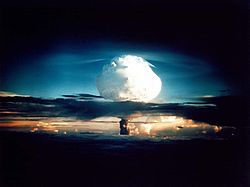This article needs additional citations for verification .(March 2015) |
This timeline of nuclear fusion is an incomplete chronological summary of significant events in the study and use of nuclear fusion.
This article needs additional citations for verification .(March 2015) |
This timeline of nuclear fusion is an incomplete chronological summary of significant events in the study and use of nuclear fusion.





This section needs additional citations for verification .(January 2018) |
{{cite journal}}: CS1 maint: article number as page number (link){{cite journal}}: CS1 maint: article number as page number (link){{cite journal}}: CS1 maint: article number as page number (link){{cite journal}}: CS1 maint: article number as page number (link){{cite journal}}: CS1 maint: article number as page number (link){{cite journal}}: CS1 maint: article number as page number (link){{cite journal}}: CS1 maint: article number as page number (link){{cite journal}}: CS1 maint: article number as page number (link)